By Adam Zewe
Staff Reporter
Community News
Posted Sunday, May 18, 2008
Years before housing developments and shopping centers sprang up in Brandywine Hundred, the community was home to several farming families.
Descendents of those families told stories about farm-life in Brandywine Hundred at a forum sponsored by New Castle County Councilman Bob Weiner (R-2nd district) at the Brandywine Hundred Library.
Many of the families that founded Brandywine Hundred can trace their histories hundreds of years, said Clarence Gunther, a descendent of the Grubb family.
The Grubbs came to America from England in the early 1700s, purchased 900 acres of land and farmed until the Revolutionary War, he said.
After America gained independence, the Grubb family took advantage of the heavily forested landscape of Brandywine Hundred by building a sawmill in Claymont, he said.
The Grubbs made a fortune in the early 1800s shipping lumber around the world from Grubbs Landing on the Delaware River, said Gunther, 85, a San Diego, Calif., resident.
Members of the Day family worked as loggers in Brandywine Hundred during the mid-1800s, but the family also owned farmland, said John Day, 79, a Wilmington resident.
He said his great grandfather was building a farmhouse on Foulk Road during the Civil War when a group of Army recruiters visited the house. Day said his great grandfather was a peaceful man, so he hid in the farm’s well and escaped the recruiters.
No Civil War battles were fought in Brandywine Hundred, but the farmers who lived in the area were not always peaceful, said James Hanby, 36, a Brandywine Hundred resident.
Hanby said a disagreement over a cattle deal led to a feud between the Hanby and Talley families. The feud ended during the Winter of 1886, when a blizzard made Marsh Road impassible at the Talley family’s farm, he said.
The Talley family announced that any farmer who needed to use Marsh Road could cut through the Talley property, except the Hanby family.
The next morning, Wesley Hanby rode to the Talley farm, armed with a shotgun, to see if the Talley family would let him cross their land. A member of the Talley family, armed with a pistol, met Wesley Hanby at the fence, said Hanby.
The two argued and eventually Wesley Hanby tried to shoot Talley, but his gunpowder was wet and the shotgun did not fire, said Hanby. Instead, he tried to beat Talley to death, but Talley shot and killed Wesley Hanby.
Talley was acquitted of murder and, while the Hanby family was not pleased with the verdict, the feud ended, said Hanby.
Members of the Talley family began to sell their land and move away by the early 1900s, like many of the farming families in Brandywine Hundred, said Andy Talley, 72, a Georgetown resident.
But there were still farms in Brandywine Hundred during the 1930s, said Day, who grew up on his family’s 26-acre farm on Foulk Road. The family grew vegetables and raised chickens and turkeys on the land, he said.
Day remembered waking up early to work on the farm before school and working until after dark when he returned.
He said he rarely took a break from farm work, but remembered visiting the Talley Fire Hall’s annual carnival during free evenings in the Summer.
One evening, Day said he was riding the Ferris Wheel with his date when he saw his father walking through the crowd looking for him. He paid the Ferris wheel operator a dime to stop the ride at the top so his father would not find him. The plan worked, Day said, until he came home and received his punishment.
As the population of Brandywine Hundred grew, Day said New Castle County officials pressured his father to sell the farm so the county could construct a park. Day said his father sold the farm when the county threatened to take the land through eminent domain.
The Talley Day farmhouse, which was built on the farm in 1847, was preserved as part of the park, but the home Day grew up in was bulldozed to build soccer fields.
“Life goes on. We lived happily ever after. Do I miss tilling the land, plowing the land? You bet I do,” he said. “There is nothing better than plowing and tilling in the Spring, smelling the freshly turned soil.”
One of the few farms left in Brandywine Hundred by the mid-1900s was the small Weldin farm at the intersection of Foulk Road and the Concord Pike, said Susane Magness, a Weldin-family descendent.
She remembered visiting the small farm and swimming in one of Brandywine Hundred’s first in-ground swimming pools, which was a 10-foot by 10-foot hole in the ground, lined with stones and filled with chilly water, she said.
The farm had chickens, a mule, a root cellar and a wide front porch from which Magness watched cars drive on the Concord Pike, which was a quiet, country road.
Her family’s farmhouse was bulldozed when the Concord Pike was expanded as part of the Blue Ball Properties Project, but Magness, 65, a Newport resident, said her family’s legacy remains in the community.
“I wanted to leave at one point in my life and move somewhere else, but for some reason I couldn’t leave. Brandywine Hundred was like a magnet,” she said. “When I realized the history of my family here, I realized that I have roots here.” |
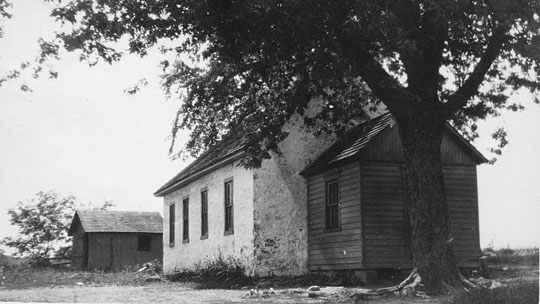
Photo provided by the Delaware Public Archives
Many of the children who lived on farms in Brandywine Hundred attended the Forwood one room schoolhouse on Marsh Road
Resident Curatorship Program
New Castle County offers a Resident Curatorship program for people interested in living in a historic home in a county park.
Once a resident has been approved by the county, he or she lives in a historic homes without paying property taxes. As part of the program, the resident must pay for repairs to the building, said New Castle County Councilman Bob Weiner (R-2nd district).
The three homes in New Castle County that are in the program are the Jester house on Grubb Road, the Talley house on Foulk Road and the Bectel house on Naamans Road.
The county has not received any applications for resident curators in the Jester or Talley house, said Weiner. He said he is working with the New Castle County Department of Special Services to acquire financial assistance for a resident curator living in the Talley House.
Anyone interested in participating in the program can contact Weiner by email at rsweiner@ncc.de.org or visit Weiner’s website, www.bobweiner.com, to find more information about the program.
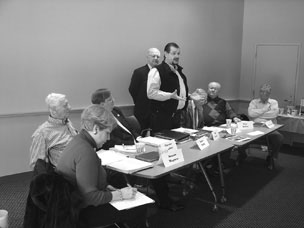
Photo by Adam Zewe
John Husband, a representative of the New Castle County Department of Special Services, talks about the Talley Day Park in Brandywine Hundred during an open forum about the community’s history. 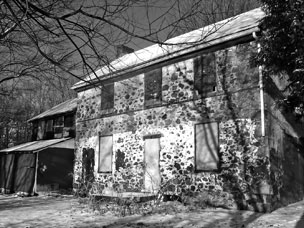
Photo by Adam Zewe
The Talley house, which was built on the Day family farm in 1847, was preserved as part of the Talley Day Park, but the farm, which was owned by the Day family, was bulldozed when the park was built.
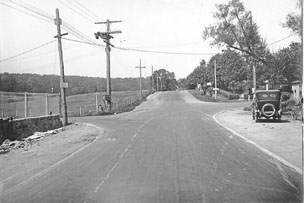
Photo provided by the Delaware Public Archives
The Concord Pike was a country road used by Brandywine Hundred’s farming families in 1918.
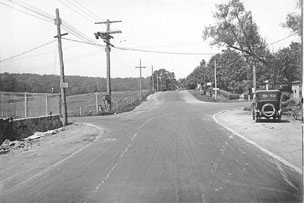
Photo provided by the Delaware Public Archives Farmland surrounded the Blue Ball Intersection on the Concord Pike in 1919. |






 Subscribe to RSS feed
Subscribe to RSS feed